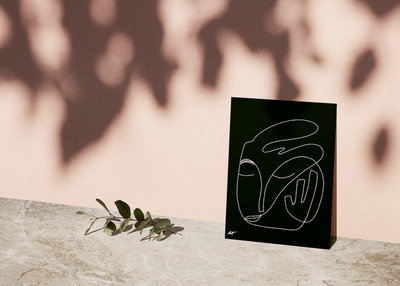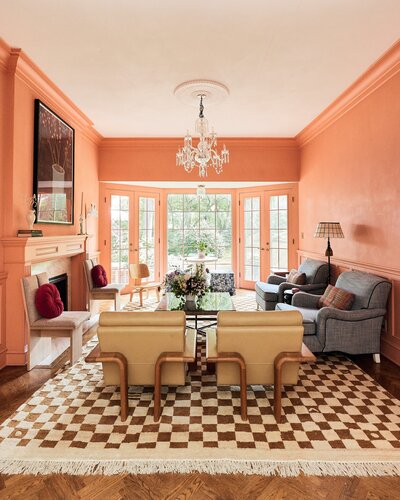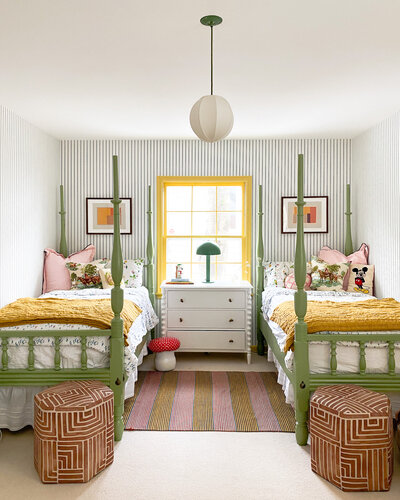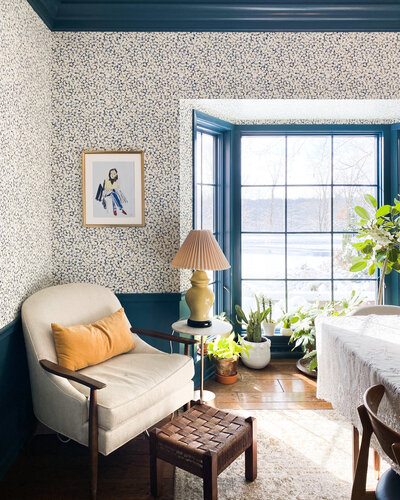

It doesn’t matter if you’re an entrepreneur or a stay-at-home mom. ALL of us are struggling to find time to fit in all the tasks required to make life flow. There are a couple of big reasons for the struggle. In this digital age, we’re more distracted than ever before. Life is expensive, and finding the money to pay off student debt or child care is a reality that makes a lot of us feel like at least one person in our family unit is working to live. And on top of that, we have to take care of ourselves, too. In fact, managing your health and mood is the most important thing to keep in check; if you can manage yourself, you can handle so much more.
When I was tested for ADHD at 27 (using continuous performance tasks (CPTs) and a year’s worth of analysis from my therapist), before I was walked through my results, I was asked if I’d graduated college. My test scores were off the charts for impulsivity, erratic thought patterns, and the way the executive functioning part of my brain worked. Though I always knew I was a little “different,” I started sobbing because I was relieved that I could point to a specific diagnosis and someone else could see exactly how hard I had to work just to make it through school. All the jokes about being “spacey Katie” at dance classes had weight. I really do like to live with my head in the clouds.
When you have a brain like mine, you learn that the foundation of living well is in systems and tools. You learn to prepare yourself for the moments you’ll misstep, and have a backup plan that won’t derail your day-to-day life, or send you into a shame spiral. Life requires all of us to roll with the punches, but that doesn’t mean we can’t prepare ourselves to duck the next time. I really believe the more structure we have, the more freedom we are able to find in our work, our lives, and our passions. The structure isn’t limiting; it gives a framework to your priorities and provides a plan for living them daily.
My advice and system are focused around three steps:
One: Prioritization
Two: Time Blocking
Three: Managing Distraction
Life has been so much easier since I’ve tailored each of these areas to for myself, my family, and my business. It took almost a full year to implement and refine, and it was totally worth it. Today I’m sharing how the first two steps—prioritization and time blocking—work in my life. On Monday I’ll be breaking down my tips and tools for managing the inevitable distractions that accompany life with ADHD. Here’s how the first two areas work:
One: Learn Your “One Thing” and How To Prioritize Your To-Do Lists Ruthlessly
When I reluctantly sat down to read the book The One Thing, by Gary Keller, I loved and hated it equally because the author’s thinking went against everything I loved about being an entrepreneur. I was great at juggling all sorts of initiatives. I thought I could just keep following whichever big idea my heart desired and it would somehow work out. I didn’t realize what I loved about my job was also making my life impossible. I worked through the whole book and about half of my Big Idea Book is filled with follow-up notes, follow-up books, 66-Day challenges, notes from podcasts, etc. It took 9 months for me to figure out what my “One Thing” was, and I realized I had to be OK with letting Wit & Delight go or completely change if necessary. Once I gave myself permission to let go of my relationship with work as it was in the past and look for new ways to love what I had built, clarity began to emerge.
I wrote a business plan. I wrote a 90-day, 1-year, and 5-year plan. I got really close to all our numbers. I slashed the projects I wanted to accomplish. I decided to back out of product development opportunities. I looked for ways to align all my current revenue streams around doing less so the impact would be more significant and focused. We’re already seeing our operating costs go down and our productivity increase, a necessary step in growing a smart and lean business. I learned that thinking small was just as impactful as thinking big. I learned how to really, truly prioritize.
So what does my prioritization process look like?
Each week I write it all down—EVERYTHING I need to get done. Then, I organize the task by how long it takes me to complete it and assume I’ll underestimate the stuff I want to do and overestimate the tasks I hate doing (we all do it, FYI). If the task can (and should) be delegated, I make a note on who it needs to go to and make sure communicating that need is on my to-do list for early in the week. All items that require my 100% full focus for more than 30 minutes get pushed to my designated dates of the week; time is set aside for big projects, organized by the task’s medium. For example, all the writing is completed on one day, the design work on another, strategy on another, etc.
Most importantly, I look at my week and make sure it’s aligned with the one major accomplishment of the quarter. There should be three projects per week that align with that goal. I’ve found this to be a crucial step in not doing too many things at once, a mistake I’ve made for the past decade. We have a lot going on, but you’d be surprised how many projects never got off the ground just because I would get distracted by the next big concept or idea. I can count on getting distracted by “bright shiny objects” weekly, which is almost always big projects or tasks around the house that will take all day, literally. Before I dive in, I remember how much it affects both my family and team when I hijack their day due to my impulsive need to explore something new. I now set it aside to examine later in the week. Which brings us to the next section!
Two: How To Schedule Time for Work You Hate, Big Idea Work, and Self-Care
I preface this section by saying you have to understand how your energy works before you can design a system around your personal needs. Some people can work really hard for 90 days and then need an entire month off. Some people can only do one day of heavily focused work followed by one day off. So understanding the way your body uses its mental and physical energy informs the way you should structure your time. If you take ANYTHING from this post, please remember not to design your life around what works for someone else. Look to the rhythm and waves of your own personal flow and figure out what your body needs. It will serve you well for whatever you plan to do in the following days, weeks, and years.
Here’s how I schedule my days and weeks:
I find a time and place for my prioritized tasks. I balance my time each week around big time blocks on Mondays, Thursdays, and Fridays, because I’ll go really deep on one project or medium (writing or designing) each of these days. If I want to chase a new idea, I’ll give myself time to do so. But on Sunday night, Tuesdays, and Wednesdays, it’s ALL about e-mail, bills, appointments, and meetings. It is the day we do planning, delegating, project status, and other mundane things necessary to make life and work happen. At home, this entails making sure the kids’ prescriptions are ordered and touching base with Joe on reordering checks and other appointments that need to be made. And the things that don’t fit? They’ll get pushed to next week’s list. And there’s no shame in that—moving a deadline is better than not hitting it at all. The goal is to make a flexible and repetitive schedule that allows me to tackle the most time-sensitive tasks, while also syncing with the rhythm and energy of everyday life.
I tackle everyday tasks around the time it takes to chip away at big, long-term projects and goals. I do all my long-term plans near the very beginning and very end of the week when all the things that I really don’t want to do are complete. For me, that’s emails, meetings, and lots of little to-dos. I have a really, really hard time focusing on mundane tasks and unfortunately writing fits into that bucket. I wish it came as quickly as designing does for me, but it’s a fact that hasn’t changed in ten years, so I doubt I’ll wake up one day and just WANT to write. So that’s why tackle it on Mondays.
Email and communication is also something I would rather avoid than face, so I’ll do email on Sunday nights just to get a head start on the week. It’s a small victory that gets me excited to tackle writing first thing on Monday mornings. My younger self would have to avoid my inbox on Sunday like the plague but after trying it, I found facing my inbox—or at least organizing it so I can just tackle the important emails when I get into the office—gave me a massive sense of relief. I used to have hundreds of unread emails, and now I don’t let it get past 60 or so. I also only check email three times a day—once right when I get up, once at lunch, and once before bed. Anyone who needs something urgently already has my number.
I have strict off-limits hours for work. I work 8:00 am – 5:00 pm Monday – Friday, and my kids go to bed at or around 7:00 pm. I’m big on consistent sleeping habits, so bedtime is a hard and fast rule. This means I have about 4 hours of quality time with the kids in the morning and at night, and I don’t work during that time. Period. We try to turn household tasks into a game, like having a dance party in the kitchen while we’re cleaning. I’ll practice my guitar while the kids eat breakfast, or work on my 100 Days of Creativity with August at night while he colors. Finding ways to align my personal endeavors with activities the kids can participate in is a big life hack I discovered this year. At times, it feels like I almost have a tiny slice of “having it all” but then I’ll find myself crawling into bed at 2:00 am only to have a child wake up crying. Having it all usually means giving up the things you need for yourself, like sleep. And whenever I choose to stay up that late, I know I won’t be nearly as productive the next day. There’s always a cause and effect relationship to the way we treat our bodies (just you wait, kids who can still drink without getting a hangover!!).
So, what happens when there is a big deadline, and I have to drop everything and work around the clock? It happens less now that I’m better at managing my time, but it’s a reality when it comes to what I do for a living. So, I plan for the fallout. If I have to work really hard for 2 weeks straight, I know I’ll have a 5-10 day period where I can barely get through my to-do list. It’s a given. So I have to plan accordingly. I’ll look for low energy tasks I can complete while listening to a podcast that lifts up my mood. I’ll make time for meditation and drawing. In fact, the 100 days of creativity project was born out of a 9-month state of depression. I’ve learned to lower the bar after I raised it so I can bounce back quickly and let the rhythm and energy flow naturally.
Eventually, a depressive state will last longer than 5-10 days, especially after a big launch or huge hurdle. I always seem to have one month where I question everything and feel unmotivated. Turns out… the experts call this BURNOUT. When burnout hits, I write down everything that happened before the depression hit. What did I eat? How long did I go without a good night’s sleep? What failures do I need to let go of? What am I holding onto that no longer serves me? What boundaries do I need to instill within myself and others? It’s not about dwelling in the past but taking inventory on what happened and how to avoid it in the future. It’s how you LEARN the way your energy and rhythm flow in your life.
Get to know yourself and plan accordingly.
Stay tuned for another post on this topic on Monday, where I’ll be sharing more about how I learned to manage my time and distractions. If you have any insight on helpful systems you’ve used to manage your life, I would love to hear them in the comments below.


Like what you’re hearing? Subscribe wherever you listen to your podcasts, or catch up by checking out the episodes below.
1. It’s Harder to Focus These Days. And No, It’s Not Your Fault
2. How Losing Everything Changed My Relationship With Things
3. The Surprising Truths I Learned After Turning 35


Kate is the founder of Wit & Delight. She is currently learning how to play tennis and is forever testing the boundaries of her creative muscle. Follow her on Instagram at @witanddelight_.
BY Kate Arends - April 12, 2019
Most-read posts:
Did you know W&D now has a resource library of Printable Art, Templates, Freebies, and more?
take me there
Get Our Best W&D Resources
for designing a life well-lived




Thank you for being here. For being open to enjoying life’s simple pleasures and looking inward to understand yourself, your neighbors, and your fellow humans! I’m looking forward to chatting with you.
Hi, I'm Kate. Welcome to my happy place.
















Thank you so much for this. As someone who also struggles with this its so good to get practical tips to consider.
Some of these tips are useful also to someone without ADHD. Thank you for sharing!
xxx
Isabel
https://isabelstories.com/
This is one post I’m going to bookmark and come back to you, because I struggle with focus and getting things done due to my own mental disorders and I feel like a lot of the advice given here will be super useful for me as well!
Thanks for sharing.
Any imbalance ADHT can affect badly to your health and daily routine. I think scheduling is most important factor in order to become a normal.
Weight plays a key role in the current lifestyle.
You can also see Healthy diet to lose weight
Wow. I just found you via the podcast you did recently with Jenna Kutcher. I relate so much with you; I also have depression, anxiety, and was diagnosed with ADHD at 27! Less than a year ago. Needless to say, I am still trying to learn about myself and find my rhythm. This post is so enlightening. It feels so good and also weird to feel “seen”, understood. I’ve heard all the advice on how to organize my time and my life and my business, but most of that advice comes from non-ADHDer’s. Their advice always feels like being told… Read more »
[…] Living with ADHD. […]